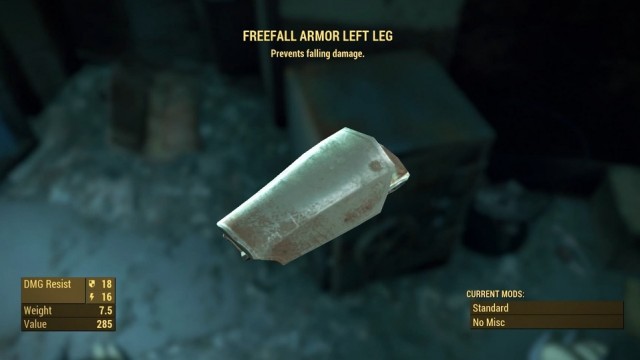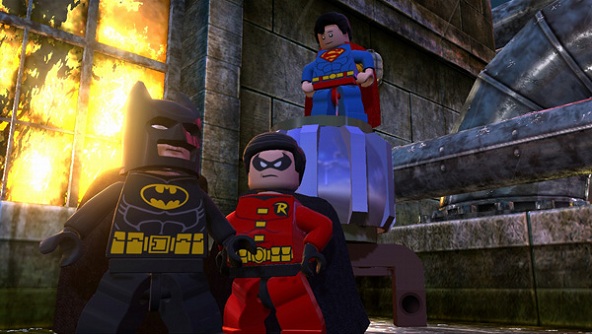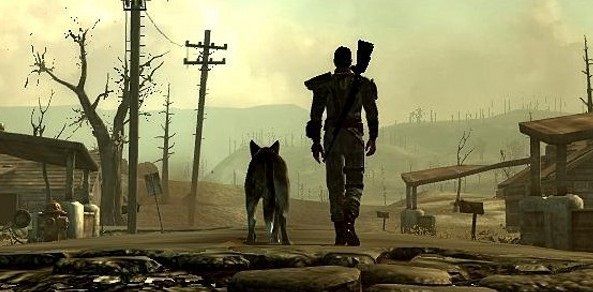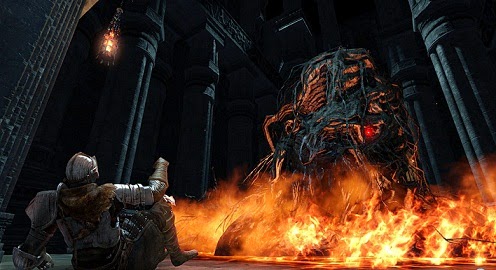

As one of the more well-known franchises at Ubisoft’s disposal, Far Cry has become a favorite amongst consumers. Given the crazy and random happenstances that naturally occur with animals and humans that find themselves wandering the series’ various in-game maps, it’s not surprising to hear that there’s fun to be had in a new entry of the series. What was surprising, however, was learning that the newest title, Far Cry Primal, would be ditching franchise mainstays like guns and vehicles in favor of sharpened sticks and woolly mammoths. While there was almost certainly initial concern with these changes, the end result has come together quite well.
Taking players back in time to 10,000 B.C., Far Cry Primal throws users into the prehistoric land of Oros. This is where the title really shines, as the world that Ubisoft has created looks absolutely stunning. The way the light shines through the branches of the myriad of trees spread throughout the forested landscapes is enamoring, while the faint glow of a torch after sundown draws you closer with its warmth. All of this is likely a result of the series abandoning old hardware (a la the Xbox 360 and PS3) to focus on bringing the experience to current-gen consoles. Whatever the reason, every inch of Oros stands out as some of the best scenery found in any game, let alone a Far Cry title.
As a result of this, the wildlife takes front and center in Primal, and, since the game takes place thousands of years ago, players get to interact with several now-extinct animals. The likes of saber-toothed tigers and woolly rhinos roam the plains and forests, and this is where the gameplay focuses its attention. Players suit up as a man known as Takkar, and after a few missions the primitive protagonist will take on the moniker of ‘The Beast Master’. As the name implies, this means he can befriend some of the more hostile creatures residing in the area.
Taming beasts quickly becomes a focus of the game as a whole, and as players level up and enhance their various skills, they’re better equipped to take on the threats present in the title. Taming the predators of Oros isn’t a challenging affair though, which admittedly makes for a disappointing endeavor more often than not. Ubisoft has tried to remedy this by implementing rare variants of a majority of the creatures, but there are so few of those creatures to begin with that the effort doesn’t truly pan out. Still, instructing a cave bear to maul hapless cavemen or taming and then riding a saber-toothed tiger are entertaining and helpful for obvious reasons.
Meanwhile, once the narrative kicks into gear, players will be drawn into the story-centric events that are unfolding. As it turns out, the Wenja (the clan in which Takkar originates from) have entered a very gruesome war with two other competing tribes that have begun moving into the land of Oros – the Udam and Izila. Since this was before modern English was a thing, the creative minds behind the game opted to seek the aid of language professionals to try to recreate authentic dialogue for this era. Despite some being concerned by the removal of a known language, it does end up benefitting the finished product.
While the entirety of the story is told through captions, Primal manages to be engaging thanks to some well-written side characters and entertaining performances. It’s obvious that the publisher has strived for immersion, and the language that’s spoken is a big part of that. Of course, guns also didn’t exist during the dawn of the Mesolithic period, which means that Takkar will continuously be gathering resources to craft weapons ranging from clubs and spears to bee bombs and arrows. Ammo can be retrieved once lodged in a foe too, which means playing it smart and conserving ammo will pay dividends for those utilizing the tools properly.
Gamers engaging in battle will also find themselves locked in some of the most gruesome combat ever seen in the series. As one might imagine, clubbing someone to death is a horrific act, but imaginations can be thrown out the window thanks the gritty animations that accompany such an action in Primal. Hucking spears through an enemy’s head, and lodging them into a wall behind them in the process, were enough to summon audible groans of disgust from myself. It’s all par for the course in a time where brutality was the name of the game though, and it works well within the setting of the in-game world.
When natural resources scattered about aren’t used for manufacturing weapons, they can be applied to enhancing structures within the protagonist’s main camp. This allows players to help out their fellow Wenja and unlock new upgrades and abilities in the process. Base-building isn’t a blockbuster feature by any means, and in the grand scheme of everything it’s somewhat forgettable. It’s certainly essential for those wanting to max out Taker’s attributes, but it’s simply just a means to that end in that regard.
Those looking for something new from a series that seems to surface every two years or so will get a game that feels genuinely fresh with Far Cry Primal. Even then, fans will be met with a very familiar formula established within its unique setting. Capturing enemy bases, lighting pyres (in lieu of radio towers), dealing with wildlife, taking on story and side missions, it’s all present in Primal and those that aren’t fond of the existing titles won’t find this game to be a saving grace. Still, it’s a refreshing take on a tried and true layout that manages to set up a solid structure within its sandbox environment. This is one of the good ones.
Far Cry Primal arrives for PlayStation 4 and Xbox One on February 23, 2016. The PC version will arrive on March 1, 2016.




 Windows 10 Can Auto-Remove Software Against Your Will
Windows 10 Can Auto-Remove Software Against Your Will Dark Souls II: Scholar of the First Sin tips
Dark Souls II: Scholar of the First Sin tips Loom Custody Walkthrough
Loom Custody Walkthrough How to change, upgrade, replace or install new PS4 HDD and restore data from old HDD
How to change, upgrade, replace or install new PS4 HDD and restore data from old HDD Fallout 4: How to Get Every Trophy and Achievement
Fallout 4: How to Get Every Trophy and Achievement